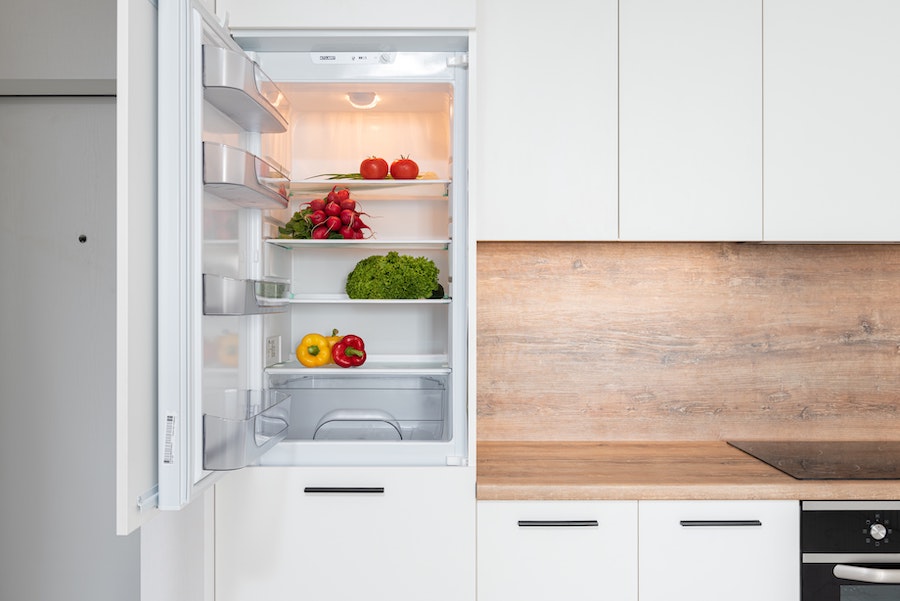If your refrigerator’s compressor is getting hot but not working as it should, this guide will help you figure out why.

Sometimes, it could be because your fridge is in the sun, and other times, it might be a more significant issue, like a broken fan. But don’t worry; this guide will assist you in finding the problem.
Just follow the steps one by one in this guide until you discover why your refrigerator compressor is hot but not running. With any luck, you’ll also be able to fix it.
Refrigerator Compressor Hot But Not Running: 9 Possible Causes and Solutions
Before you start tinkering with electrical parts, turn off the fridge. This step keeps you safe from electric shocks and prevents any harm to the components.
Remember that some electrical bits, like capacitors, can still have a charge, so don’t mess with them.
If you can easily unplug the fridge by pulling it away from the wall or accessing the power switch, do that.
If not, locate the fridge’s circuit breaker in your breaker box and switch it off. To confirm that the refrigerator has no power, open the doors and check if the lights work.
Let’s dive into different causes and solutions for your refrigerator compressor being hot but not running.
1. Your Fridge’s Location
Begin by examining if your refrigerator is in a spot where the sun’s rays directly hit it. If the sun is beaming onto the back of your fridge, it can overheat the compressor.
Usually, experts like builders and architects pick cool spots for fridges, but let’s start with this simple check before diving into more complex issues.
If your fridge sits in a sunny place, consider relocating it within your kitchen or finding a way to block out the sunlight from any windows.
2. Poor Ventilation
Ensure the back of your refrigerator has space for air to move around. If the hot air can’t escape, it will make the compressor get too hot. The compressor needs room on all sides to let the air flow properly.
Don’t put things in front of or on your fridge. This can stop it from cooling well, causing the temperature inside to rise.
Even magnets and keepsakes on the fridge can change the temperature, resulting in the compressor overheating.
3. Blocked Air Vents
The air vents inside your fridge help the cool air circulate and keep your food cold. If these vents get blocked, the cool air can’t flow properly, and that can make the compressor run nonstop without cooling the fridge.
Things can block these vents for different reasons, like putting items too close to them or because of how the fridge was designed.
4. The Internal Temperature is Too Low
A common mistake at home is setting your fridge too cold and putting it harder than you should. It can make the compressor overheat and even break, costing you time and money.
When you set your fridge below 35 degrees Fahrenheit, the compressor has to work hard, causing quicker overheating.
To prevent overheating, check the control panel and make sure the temperature is between 37 and 38 degrees Fahrenheit.
You risk stressing the compressor if your fridge is colder than 35 degrees.
And if it’s warmer than 40 degrees, it might encourage harmful bacteria to grow on your food leftovers, making them unsafe to eat.
5. Dirty Condenser Coils
The condenser coils at the back of your fridge can get dirty or frosty, making your compressor too hot.
To check if they’re causing the issue, clean them up. Here’s how:
- Please turn off your fridge and carefully move it away from the wall.
- If there’s a cover on the condenser coil unit, remove it.
- If you see dust on the coils, wipe it away with a damp cloth or vacuum cleaner. If they’re covered in frost, let them defrost and then clean them with a dry cloth.
- After cleaning, switch your fridge back on and watch the compressor for a few hours to ensure that cleaning the coils has fixed the problem. If not, move on to the next step.

6. Faulty Condenser Fan
If none of the above things cause the issue, the next step is to examine the condenser fan. This fan helps keep the condenser coils cool, which, in turn, keeps the compressor at the right temperature.
Here’s how to examine it:
- Please turn off the power to your fridge and gently pull it out from the wall.
- Remove the cover from the condenser fan.
- Try to spin the fan. If it can’t move because something’s blocking it or it’s covered in frost, clear the obstruction or let it defrost.
- Now, check the fan with a multimeter tool to see if it has continuity (basically, if it’s working).
- To do this, disconnect the fan motor first.
- After disconnecting, use the multimeter to test the fan motor. If the test shows that there’s no continuity, it means the fan needs to be replaced. If it passes the test, move on to the next step.
- To be sure that changing the fan has fixed the compressor issue, turn your fridge back on and watch the compressor over the next few hours.
7. Faulty Temperature Control Thermostat
The temperature control thermostat is crucial in telling the control board how much power to send to the evaporator, compressor, and condenser fan motor.
If the thermostat isn’t working correctly, it can cause the compressor to overheat.
Here’s how to test it:
- Open your fridge door and find the thermostat.
- First, try turning the thermostat from the lowest setting to the highest. Listen carefully for a clicking sound. If you hear a click, the thermostat is working as it should. If you don’t hear a click, it’s probably damaged.
- Before moving forward or replacing the thermostat, it’s a good idea to use a multimeter to test it for continuity.
- To do this, turn off the power and disconnect the thermostat.
- Once it’s disconnected, check the thermostat for continuity using the multimeter. If the test shows no continuity, it means the thermostat needs replacing. If it passes the test, move on to the next step.
- To confirm that changing the thermostat has solved the compressor problem, switch your fridge back on and watch the compressor over the next few hours.
8. Lack of Refrigerant
If your fridge is making more noise than usual or working extra hard, the likely issue is a need for more refrigerant. This is common, especially in older fridges. And it can cause various troubles.
Your fridge’s primary cooling system relies on refrigerant to circulate through a closed loop. The compressor pressurizes this refrigerant, enabling it to move around the secure design and keep your fridge cool.
There should always be the right amount of refrigerant in the system. When it’s too hot or not appropriately charged, problems can arise.
Tiny leaks in the refrigerant system can cause your fridge to overheat and stop working. This happens because the small leak forces the compressor to work harder with the same amount of refrigerant, causing it to get hotter and eventually shut down.
WARNING: Don’t attempt fixing refrigerant leaks or adding refrigerant on your own. Doing so could damage your fridge and void the manufacturer’s warranty. Instead, always seek the help of a professional to address leaks or adjust refrigerant levels.

9. Malfunctioning Compressor
If the compressor is damaged, it won’t be able to compress the refrigerant properly, resulting in overheating.
WARNING: Working with the compressor can be very hazardous, and you should only attempt it if you’re qualified. Here’s how to check the compressor unit:
- Confirm that the power is turned off.
- Locate the compressor unit.
- First, check for any obvious leaks. If you find a leak, you’ll need to replace the compressor.
- Next, test the compressor using a multimeter. Place the probes on the electrical pins found on the side of the compressor.
- If the compressor fails the multimeter test, it means it needs replacement. However, replacing a compressor can be costly and complex, so consider buying a new fridge instead.
Final Tips
In conclusion, keeping your refrigerator in good shape is essential to avoid common issues. To prevent future problems, remember these easy tips:
- Place your fridge away from direct sunlight and ensure proper ventilation around it.
- Clean the condenser coils and fans to help the compressor stay cool.
- Set your fridge temperature between 37-38°F to keep it running efficiently.
- Call a qualified repair technician if you suspect a refrigerant or compressor issue.
By following these steps, you can enjoy a smoothly running refrigerator and save time and money in the long run.
